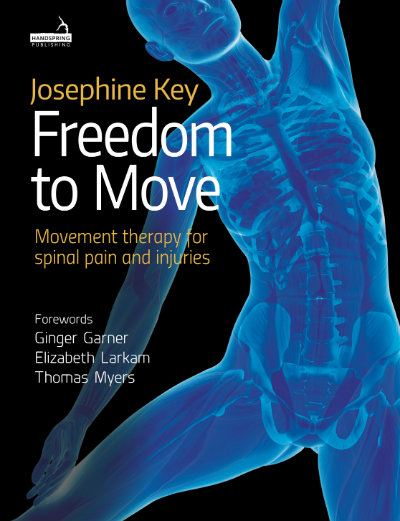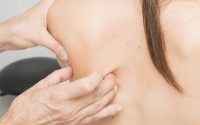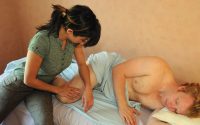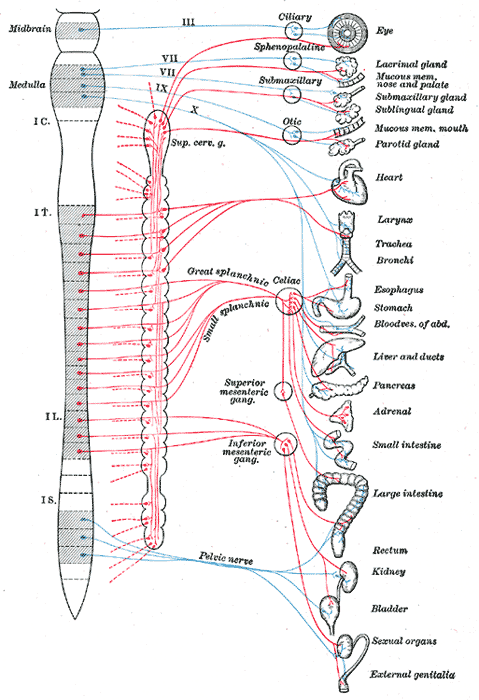Josephine Key talks about Freedom to Move
 Can you tell us a bit about yourself?
Can you tell us a bit about yourself?
I’ve been a practicing physiotherapist for over 45 years, the majority of which have been devoted to seeking a better understanding of the spine in both its health and dis-ease. I have developed a model of care which combines manual therapy and complimentary movement therapy which more specifically addresses the client’s actual neuro-myo-fascial and joint dysfunctions and helps restore more healthy patterns of spinal control for optimal function.
I’ve called this model the Key Approach. Its evolution is the result of evaluating and integrating the available movement, fascial and neuroscience; the ample evidence gleaned from clinical practice; the exploration and evaluation of various movement disciplines – for what they offer in terms of healthy spinal control – or otherwise.
I am increasingly exploring the felt sense of movement and the ability to exploit neuroplastic change – “retraining our brain” to organise healthier movement patterns and better biomechanics.
I have had a number of academic papers published in the international peer reviewed Journal of Bodywork and Movement Therapy. (See www.keyapproach.com.au/publications). My paper “The Core: Understanding it and retraining its dysfunction” was one of the journal’s five most downloaded papers in 2014.
My first book, BACK PAIN: A movement problem. A clinical approach incorporating relevant research and practice was published by Elsevier in 2010.
My latest book FREEDOM TO MOVE: movement therapy for spinal pain and injuries has just been published by Handspring Publishing.
I have presented at national and international congresses and conduct workshops both in Australia and overseas for physiotherapists, and interdisciplinary manual and movement therapists.
 What made you write Freedom to Move?
What made you write Freedom to Move?
My first book “Back Pain: A movement problem” offered the reader an in-depth treatise on healthy and ‘dysfunctional’ spinal posturo-movement control found in people with a whole spectrum of spinal pain disorders. It proffered a combined, complimentary manual therapy and movement therapy approach to redress these joint and myofascial movement disorders – and so, ease the clients’ pain.
I consider that one of the short falls of the book was inadequate coverage of the particular exercise and movement therapy advocated if one is to more effectively rehabilitate most spinal pain disorders. I have been increasingly interested in the aspect of therapeutic movement for spinal pain and continue to further develop and refine the Key Moves® for spinal rehabilitation.
Sarena Wolfaard published my first book and was keen for me to write another which bore the fruits of the further development of my work over the past 8 years. I was eventually ready to do so. I wanted this to be an informative yet accessible, clinically useful practical manual for the multidisciplinary movement therapist treating spinal pain – Freedom to Move is the result.
What is The Key Moves® Programme?
Spinal pain research is increasingly demonstrating the importance of the deep sensori-motor system in healthy postural and movement control of the trunk. When this deep muscle system is lazy and weak, the body compensates by over-engaging some of the large more superficial trunk muscles for the job – and that is where problems start to occur for the spine and pelvis. This substandard control is not only likely to lead to spinal pain but also to many other ‘injuries’, pains, tightness and stiffness etc.
Unfortunately a number of therapeutic, strength, fitness, and ‘core stabilisation’ training programmes don’t pay enough attention to deep system control in the trunk. Instead, the tendency is to overly work the large muscles, thereby contributing to the development of many pains and ‘injuries’ – and the need to ‘use the roller’ and stretch all the time.
The Key Moves® are a system of embodied natural movement explorations. They reintegrate physiological movements that develop during the process of motor development but which become diminished or absent in people with spinal pain disorders.
In essence, the Key Moves® rely a lot upon ‘deep myofascial system’ activity and so provide the opportunity to retrain and re-condition the ‘deep’ postural muscle system and help re-establish the important, ‘key’ basic (fundamental) patterns of movement control in the spine and proximal limb girdles necessary for a more healthy, fit, strong and robust musculo-skeletal system.
Re-establishing the ‘fundamental patterns’ are central to the approach as they provide the basic building blocks of spinal control. These are particularly deep system dependent and are a key element to restore in movement. When they become better established, they are further integrated into more challenging exercises and functional movement patterns
The Key Moves® is a sensori-motor re-learning programme which focuses a lot on mindfulness in movement, and refining the senses of interoception, proprioception – sensing ‘how’ a posture or movement feels – and being able to make discreet adjustments. Through sensory enrichment we can tap into the neuroplasticity of the central nervous system and facilitate changed movement behaviour. The movements are akin to ‘brain exercises’ which aim for more refined patterns of functional movement control
The programme also address.es the freer sliding and fitness of the fascial system to further improve whole body flexibility and movement ease.
What is the relevance of the current fascia research findings?
The fascial system has been largely ignored until relatively recently – yet it provides the basic building blocks of functional anatomy, posture, and movement. ‘Fascia’ is enlarging our understanding of musculo-skeletal pain and ‘how’ we move.
Research into the fascial system shows that it influences and is affected by the nervous system, fluid dynamics and mechanical loading. Structural support, joint loading and movement are not only affected by the local myofascial tissues but by the whole fascial ‘bio-tensegrity’ system. In a tensegrity system, force transmission is nonlinear; in other words, forces applied to it are also transmitted tangentially and in all directions across the matrix.
Appreciating the functional body as a bio-tensegrity system helps the movement therapist understand how and why a movement initiated in one part of the body will create changes in tension (not only locally but also regionally and in other, often quite distant, parts) that contribute directly or indirectly to movement and/or stability.
This “whole system involvement” means the neuromuscular system doesn’t need to work too hard to produce a given posture and movement, thus greatly reducing the energy and effort required in functional movementyet enabling movement diversity.
By initiating movements from ‘key points of control’ we can influence the architecture of the whole fascial-tensegrity system, improve spinal flexibility and control while also accessing stiff regions and restrictions in the axial and limb tissues. The effect is to promote better tissue elasticity and easier movement. This differs from the traditional approach of static stretching, which often does little to change the tensegrity of the whole fascial matrix – and often bothers the spine.
And how do you reconcile fascia and neuroplasticity?
The fascial system is richly innervated possessing an exceptionally high density of mechanoreceptors and free nerve endings which contribute to our senses of interoception and proprioception which play an important role in the central nervous system’s (CNS) integration and control of posture and movement. Interoception is the ability to sense and monitor our inner landscape. It is a vital tool in accessing improved deep myofascial system activity and changing movement behaviour
The plentiful innervation in fascia also contributes to nociception if the fascia becomes ‘bound’ and free nerve endings are activated
Fascia can thus be both a source of pain and disturbed afference to the CNS – which in turn leads to adverse (neuroplastic) changes in the CNS – evidenced by altered control of posture and movement – and musculoskeletal pain.
However there is an upside to neuroplasticity: by restoring fascial slide, fluid dynamics and elasticity through appropriate manual and movement therapy we can exploit the CNS ability for more positive ‘neuroplastic change’ and improve neuro-myo-fascial function and movement control, joint loading and protection and functional wellbeing.
Which part of the book do you like most?
I’d have to say Chapter 7. This offers a suite of 60 exercises for the benefit of patients and practitioners alike. When executed as instructed and mindfully, these are safe, enjoyable and therapeutic as they help re-establish the natural foundations of healthy spinal control. For clarity and ease of access, these are presented in a recipe book format – instructions on the left hand page and illustrated on the right.
The first section of the book (Chapters 1-4) is a reference section to support and aid the understanding of the major practical section (Chapters 5-10) in the second part of the book
What is your current project?
Having a restful respite! – practising what I preach and devoting more time to myself! One forgets the work involved in writing a book – particularly after submitting the manuscript! – added to which the past eighteen months have been particularly eventful. However I continue to explore and develop the Key Moves® and despite saying to myself that Freedom to Move is my last book I nonetheless find myself thinking of a sequel: ‘More Key Moves®’!
Freedom to Move, Movement Therapy for Spinal Pain and Injuries is Available now at www.terrarosa.com.au


